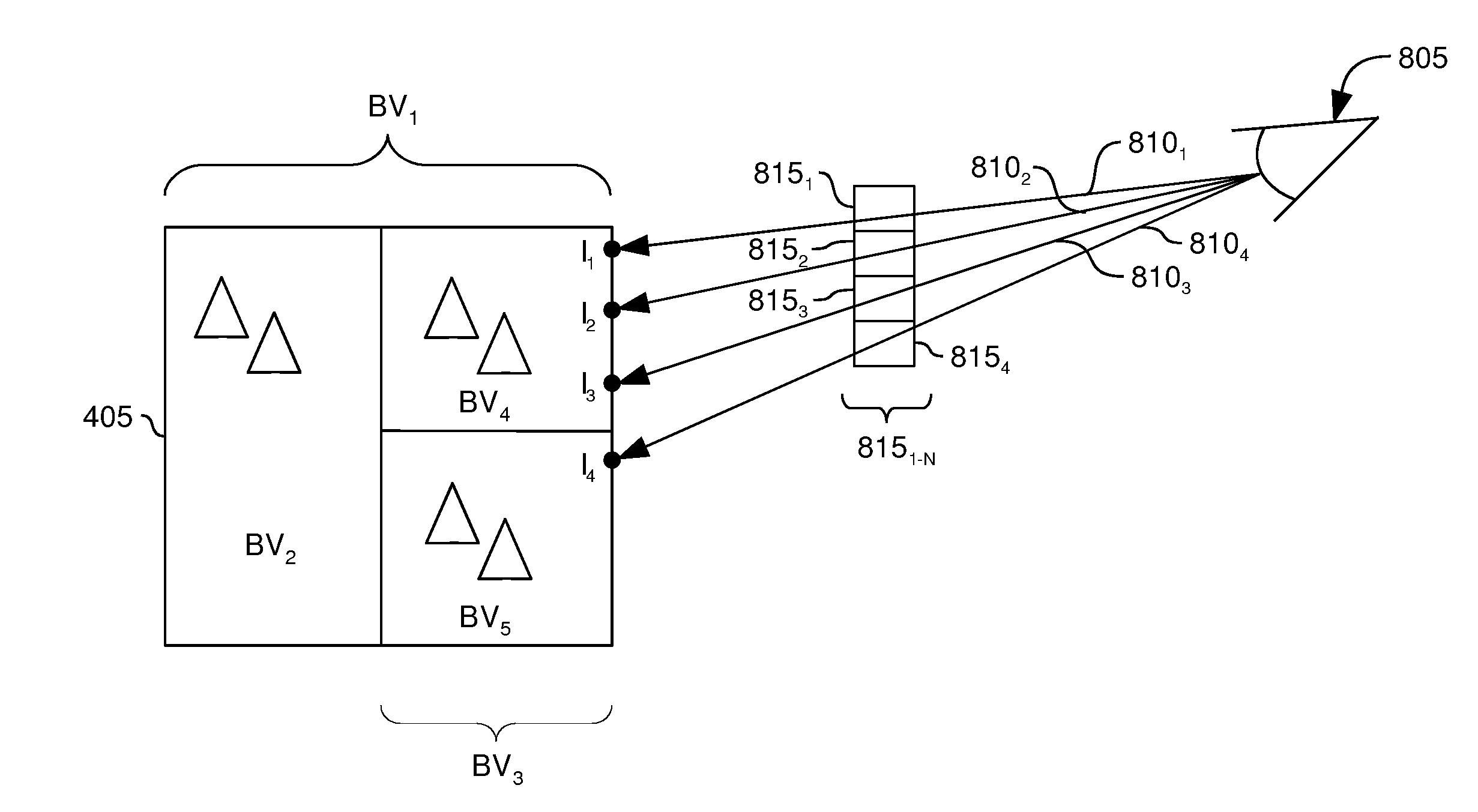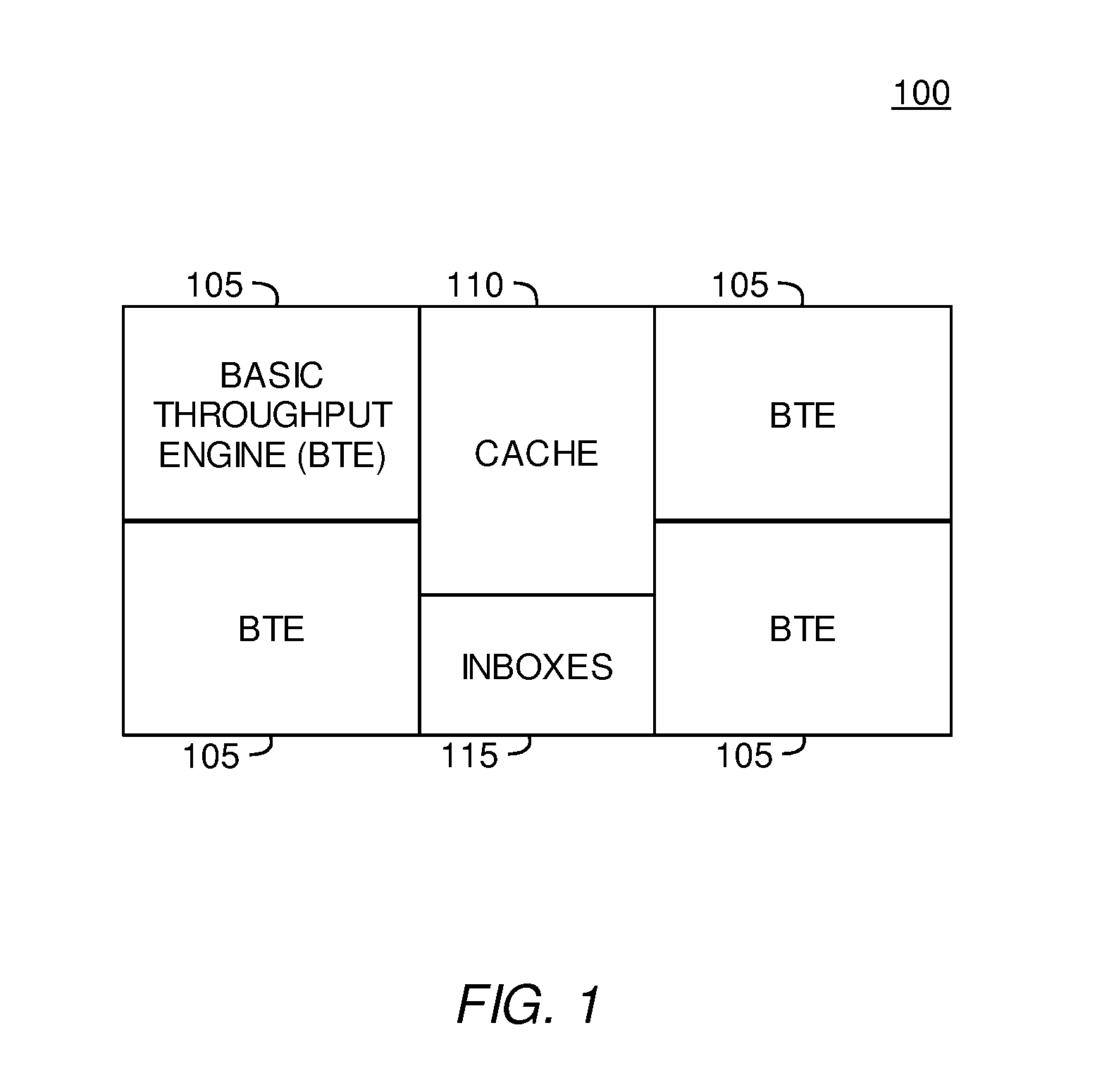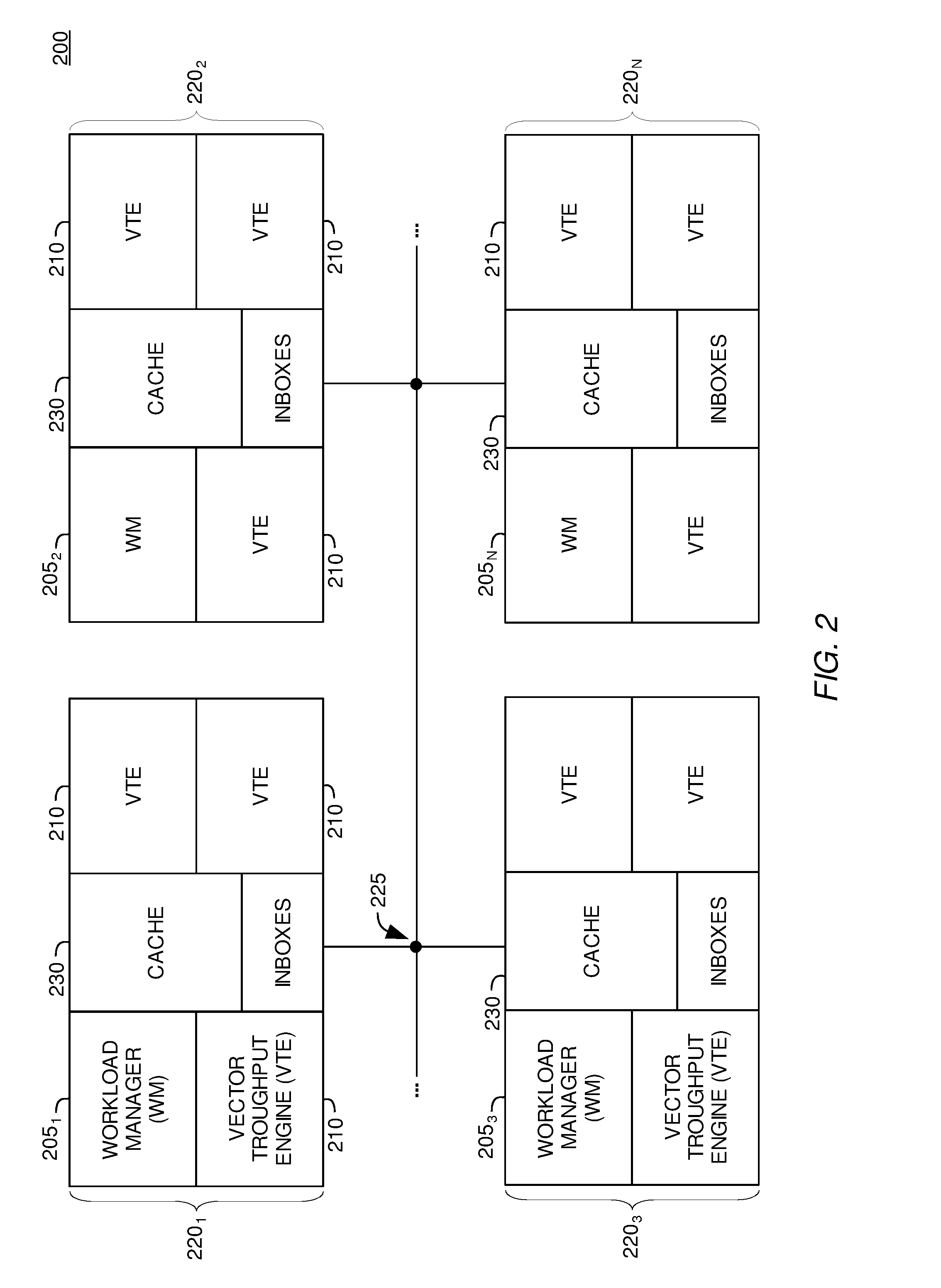Methods and Systems for Reducing the Number of Rays Passed Between Processing Elements in a Distributed Ray Tracing System
a ray tracing and processing element technology, applied in the field of image processing, can solve the problems of rasterization suffering from some drawbacks, using relatively low amounts of computational power, and modern monitors display images, and achieve the effect of reducing traffic on the communication network
- Summary
- Abstract
- Description
- Claims
- Application Information
AI Technical Summary
Benefits of technology
Problems solved by technology
Method used
Image
Examples
Embodiment Construction
[0026]Embodiments of the invention provide methods and apparatus for reducing traffic on an image processing system communications network. According to embodiments of the invention, a first processing element (e.g., a workload manager) may use a spatial index to trace a first ray through a three dimensional scene until a leaf node is reached. Once the first processing element reaches a leaf node in the spatial index, the first processing element may store information which defines the first ray and the leaf node (e.g., ray trajectory, leaf node identification, etc.) in a buffer. Next, the first processing element may traverse the spatial index with a second ray. If the first processing element traverses to the same leaf node with the second ray as was traversed to with the first ray, the first processing element may update a counter which indicates how many rays in a series of rays hit the same (common) leaf node. The workload manager may continue to issue new rays and update the c...
PUM
 Login to View More
Login to View More Abstract
Description
Claims
Application Information
 Login to View More
Login to View More - R&D
- Intellectual Property
- Life Sciences
- Materials
- Tech Scout
- Unparalleled Data Quality
- Higher Quality Content
- 60% Fewer Hallucinations
Browse by: Latest US Patents, China's latest patents, Technical Efficacy Thesaurus, Application Domain, Technology Topic, Popular Technical Reports.
© 2025 PatSnap. All rights reserved.Legal|Privacy policy|Modern Slavery Act Transparency Statement|Sitemap|About US| Contact US: help@patsnap.com



